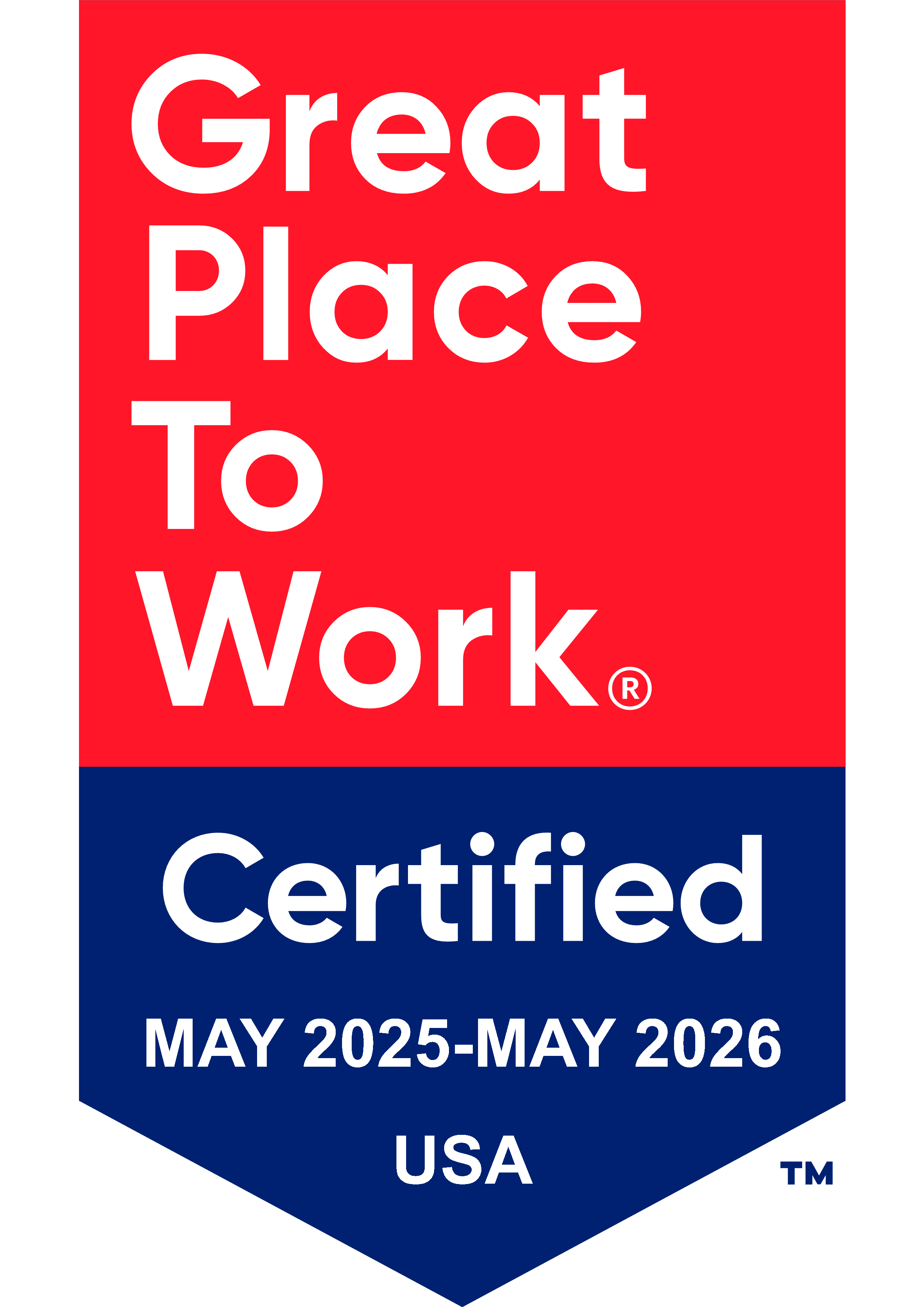What does it really mean for your coalition to be ready to implement a new strategy, program, or policy? In mid-October, CADCA hosted the sixth webinar in its 18-part series, Competencies in Focus. Each webinar explores one of CADCA’s Coalition Competencies, a research-backed framework designed to strengthen coalition work. Developed in partnership with the Center for Public Health Systems Science at Washington University in St. Louis, these competencies are the result of more than three years of research and input from coalition leaders.
Led by Jessica Price, Dr. Brittany Cook, and Kristina Clark, this webinar focused on the Readiness competency, which is defined as the extent to which an organization is both willing and able to implement a particular innovation. So, why does readiness matter? Because reaching desired outcomes is hard and prevention work involves complex problems that don’t have easy fixes. There are proven frameworks and best practices that can help coalitions, but how do you implement them with quality?
Dr. Cook introduced the R = MC² model as a practical way to understand readiness. It stands for Readiness = Motivation x General Capacity x Innovation-Specific Capacity. She compared it to a three-legged stool: motivation and the two types of capacity are all essential. If even one leg is missing, the stool falls over.
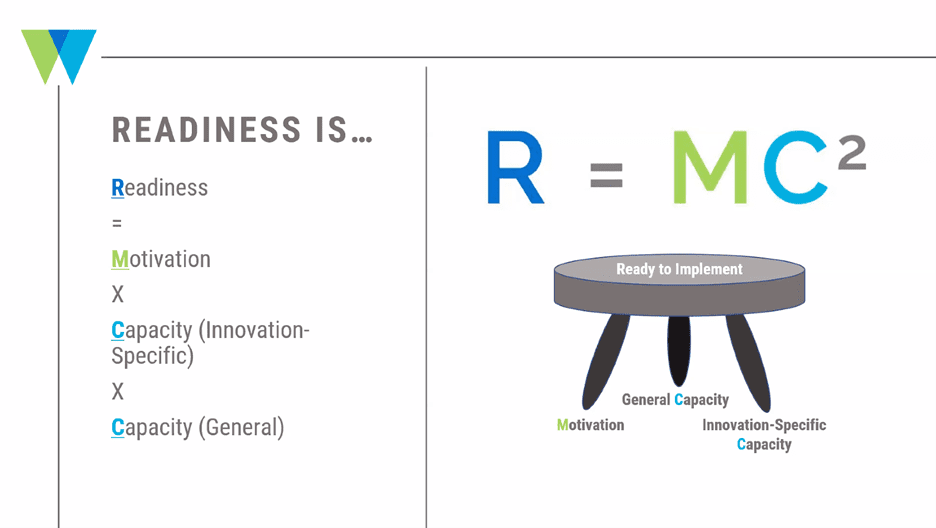
Each component (motivation, general capacity, and innovation-specific capacity) has its own set of subcomponents that determine whether a coalition is truly prepared to implement an innovation, which can be either a new program, practice, or policy.
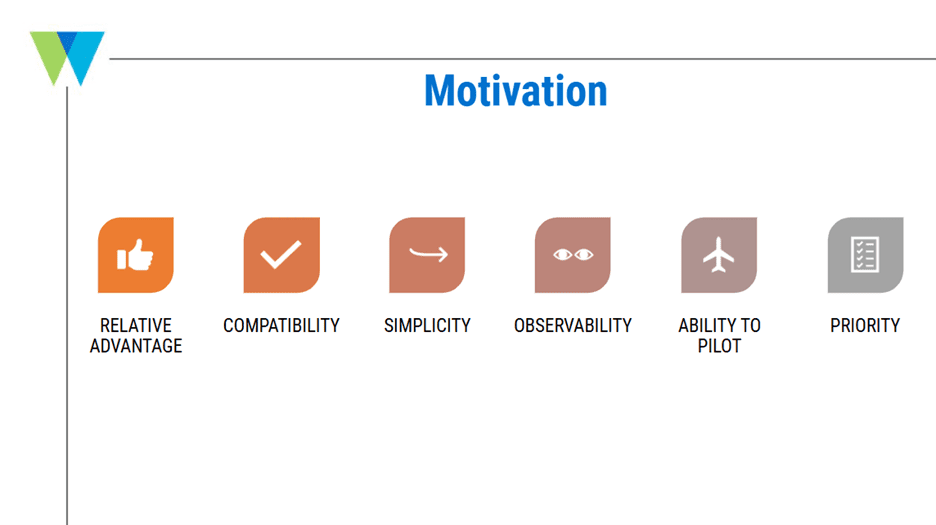
Motivation refers to the coalition’s willingness to take on a new strategy. The subcomponents include:
- Relative advantage means that the coalition members believe that a new prevention approach will be more effective than what they’re currently doing
- Compatibility: Will the prevention strategy align or fit with the coalition’s values and goals and meet the needs of the local community?
- Simplicity: Is this strategy easy to implement for the coalition and partners or is it challenging, complex, and complicated? Are there lots of pieces and moving parts or is it fairly simple?
- Observability: Can coalition members and stakeholders see visible and positive results from early implementation of the strategy, or will it take time to notice impact?
- Maybe they’ve seen other coalitions and communities implement this innovation well and have seen the impacts of implementing this particular policy, program, or practice.
- Ability to pilot: Can this be tested out? Can the coalition pilot the approach in a small setting before committing to a full-scale implementation?
- Priority: Communities are faced with lots of different challenges and coalitions work on many different things at once. Among all the challenges facing a community, how important is this particular strategy compared to other pressing issues?
Dr. Cook encouraged attendees to review these subcomponents and assess their strengths and barriers. She moved on to describe the general capacity component, which refers to how a coalition functions day to day and what they need to operate effectively regardless of which strategy they’re implementing.
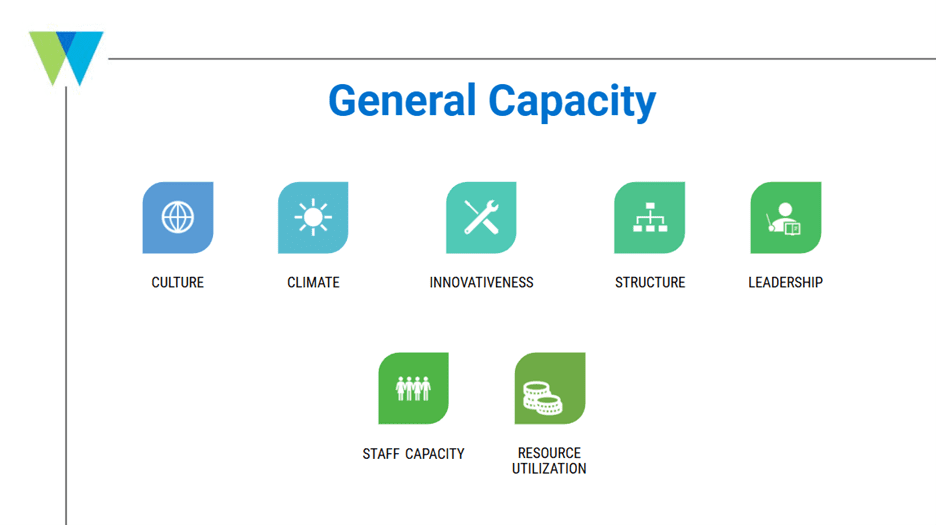
The subcomponents include:
- Culture: The shared values and beliefs and norms that shape how members work together to approach prevention work
- Climate: The current atmosphere within the coalition, including how supported, included, and connected members feel to their roles and one another
- Innovativeness: The coalition’s willingness and openness to trying new strategies, tools and approaches as opposed to doing the same old thing
- Structure: Specific roles, resources, and processes the coalition has in place that shape how work gets done
- Leadership: Does the organization have strong, committed leaders who support and drive efforts
- Staff capacity: Having enough of the right people with the right skills and time. Does the coalition have access to skilled individuals, both staff and volunteers, who can plan and carry out the activities the coalition is trying to do?
- Resource utilization: Refers to monetary resources, but time and effort as well. Is the coalition able to effectively manage funding, manage volunteers, in-kind resources, and time?
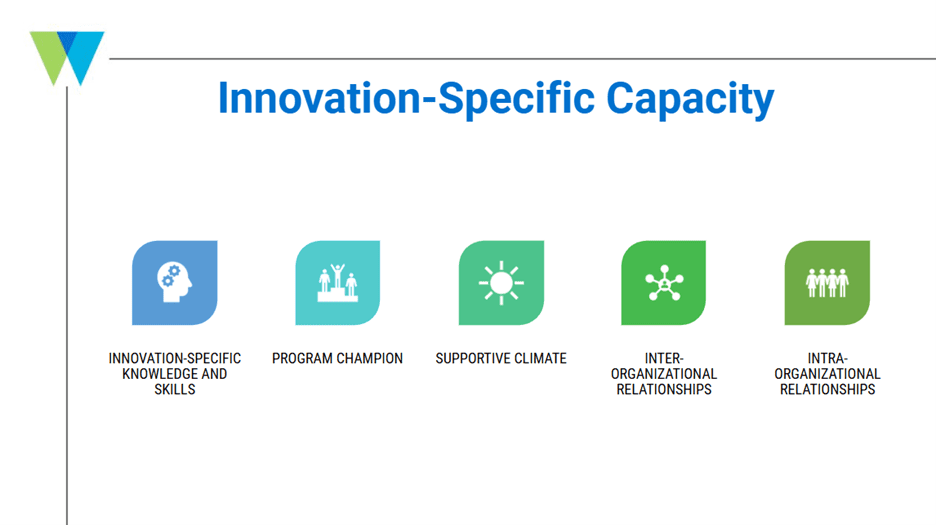
Innovation-specific capacity focuses on what it takes to implement a specific prevention strategy successfully:
- Innovation-specific knowledge and skills: Does the coalition understand the specific prevention strategy, how to implement it, understand it, and know what to do and how to do it?
- Program champion: Does the coalition have a passionate individual who actively promotes and drives adoption of a particular strategy or innovation?
- Supportive climate: Does the coalition foster a supportive environment where members feel supported and encouraged to work on the specific prevention effort?
- Inter-organizational relationships: Refers to relationships outside of the coalition with community organizations or different sectors like school or law enforcement or healthcare.
- Intra-organizational relationships: Are the relationships within the coalition strong?
- A great example of strong intra-organizational relationships would be a coalition maintaining strong communication and collaboration among members to ensure smooth coordination for a specific strategy or innovation you’re trying to implement
Dr. Cook also explained five key principles to encourage coalitions to think critically about readiness.
- Readiness can change over time; even highly ready coalitions can lose motivation or capacity due to internal or external shifts.
- Readiness matters throughout the lifecycle. It should be assessed before, during, and after implementation to sustain impact.
- Readiness is innovation-specific. Being ready for one strategy doesn’t mean you’re ready for another.
- Readiness exists at multiple levels. Leaders, staff, partners, and community members may all have different levels of readiness.
- Readiness can be built. Barriers aren’t permanent. With the right support and investment, coalitions can strengthen both motivation and capacity.
CADCA trainer Kristina Clark brought these principles to life with a real-world example from her coalition in Batesville. Before the pandemic, the coalition identified a need for increased community access to naloxone, a medication that reverses opioid overdoses. They proposed installing naloxone boxes in city-owned buildings and private businesses, but that idea resulted in immediate pushback from some key partners.
The mayor’s office and local police expressed concern that making naloxone widely available might “send the wrong message.” At the same time, healthcare providers and overdose prevention groups strongly supported the idea, emphasizing that public access to naloxone could save lives.
Using the R=MC² framework, the coalition took a closer look at their readiness:
- Motivation: Some partners were highly motivated (healthcare and recovery professionals), while others were hesitant. To strengthen motivation, the coalition connected the effort to the city’s broader goals, like public safety and cost savings.
- General capacity: Strong. The coalition had the right partners, solid leadership, effective structures, and a supportive culture in place.
- Innovation-specific capacity: Moderate. They needed to build technical knowledge about vendor selection, legal considerations, and training for naloxone use.
Despite challenges, the coalition was able to pilot three naloxone boxes across the city and ultimately used data, community input, and thoughtful communication to gain buy-in from reluctant stakeholders.
Kristina’s example demonstrated that readiness isn’t about having everything figured out from the start. It’s about asking honest questions: Are we ready to move on this? If not, what needs to change? The webinar wrapped up with a reminder that readiness is an ongoing process. Coalitions can and should regularly assess their motivation, capacity, and alignment with their strategies to ensure they’re set up for success. As Dr. Cook put it, readiness helps coalitions make informed decisions, set achievable goals, and ultimately work together more effectively toward reducing substance use in their communities.
For a deeper dive, watch the webinar recording to learn how to build and incorporate readiness. Join our next webinar in the Competencies in Focus series on November 5 at 2 PM ET, as we take a closer look at the Community Engagement competency.


